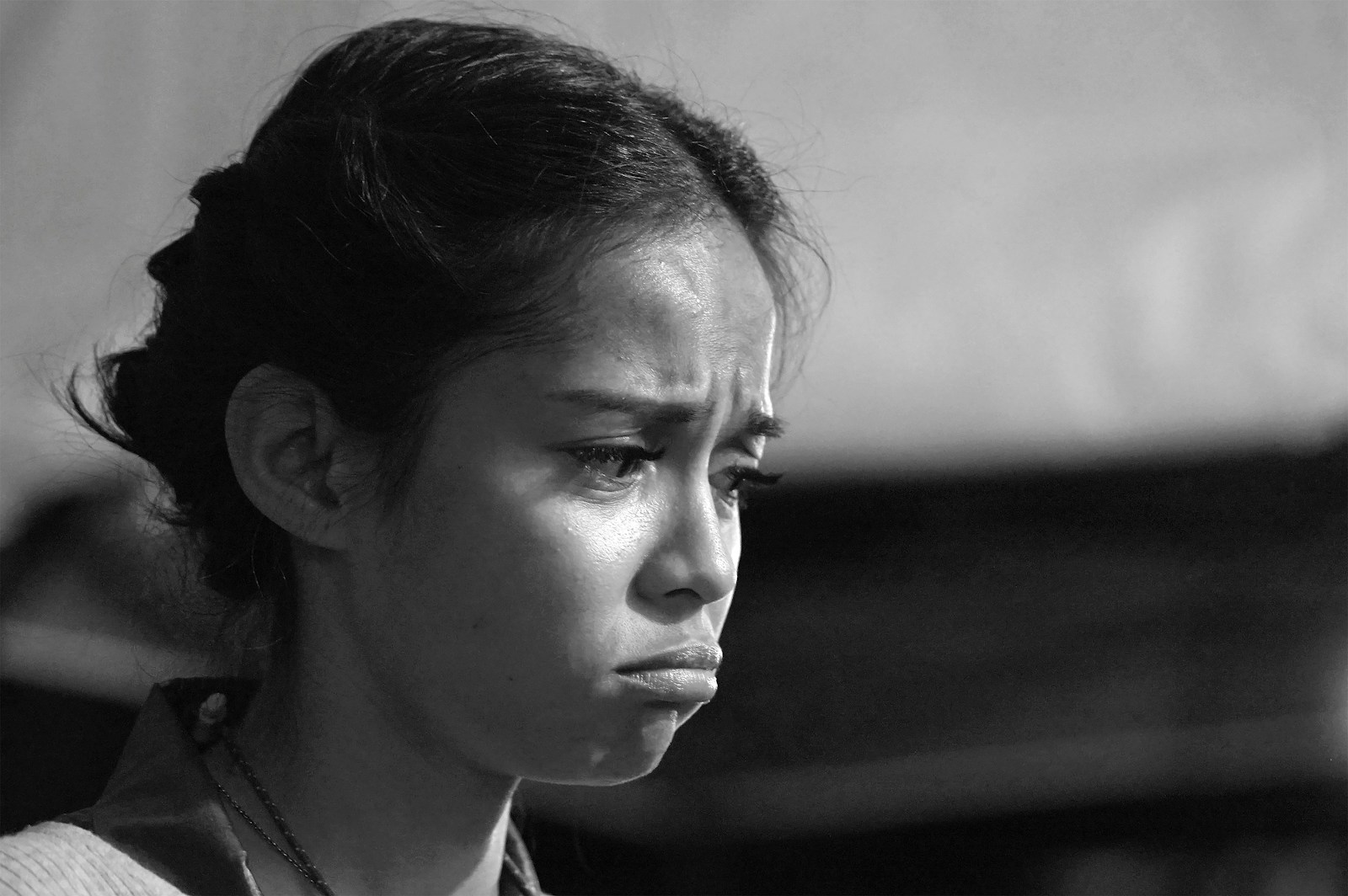
triste

sad
'Triste' describes the state of feeling or appearing unhappy or depressed.
Example sentences using: triste
Él se siente triste.

He feels sad.
This sentence is expressing someone else's emotion. 'Él' means 'He', 'se siente' is a reflexive verb meaning 'feels'.
Su pérdida es muy triste.

His loss is very sad.
'Su' is a possessive adjective meaning 'his', 'pérdida' is 'loss', 'es' is 3rd person singular of 'to be', and 'muy' is 'very'. This sentence can be used to express sympathy.
La película fue triste.

The movie was sad.
'La película' is 'the movie', 'fue' is the preterite of 'to be' indicating a completed action in the past, used here to express personal opinions about past events.
Ella tiene una cara triste.

She has a sad face.
'Ella tiene' translates to 'She has', 'una cara' is 'a face'. In this sentence, 'triste' describes the expression on someone's face.
Es una historia triste.

It's a sad story.
In this phrase, 'Es una' means 'It's a', and 'historia' is 'story'. 'Triste' is qualifying 'historia', indicating that the story evokes feelings of sadness.
Estás triste?

Are you sad?
This is a common question structure in Spanish. 'Estás' is a second person present tense of 'to be', and the intonation would indicate that it is a question.
Tengo un gato triste.

I have a sad cat.
'Tengo' means 'I have', 'un gato' is 'a cat'. Here, 'triste' is used to describe the cat's assumed emotional state.
Este libro es triste.

This book is sad.
'Este' is 'this', 'libro' is 'book', 'es' is 3rd person singular of 'to be'. This sentence expresses an opinion about the book.
El clima es triste.

The weather is sad.
In this case, 'triste' is being used to describe the weather, implying it's gloomy or depressing. 'El clima' means 'the weather', and 'es' is the 3rd person singular of 'to be'.
Estoy muy triste hoy.

I'm very sad today.
This is a basic sentence structure expressing personal emotion. 'Estoy' is the 1st person singular present of 'to be', 'muy' means 'very', and 'hoy' means 'today'.